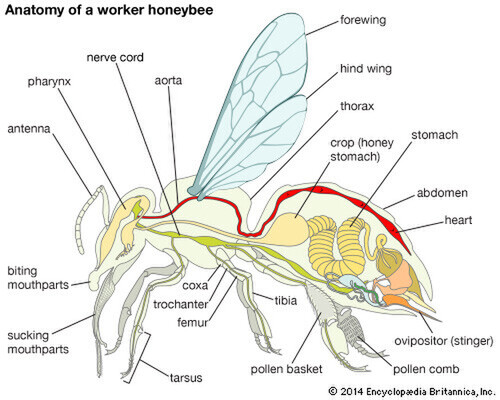Bees, like all insects, have three body sections - the head, thorax and abdomen.
Head
On the top of the head the bees antennae is it's sense organs, they are responsive to both touch and smell. It has five eyes, 3 compound eyes and two simple eyes on the top of the head that are sensitive to light. Bees have a keen sense of smell, the guard bees smell each bee that enters the hive and they can tell if the queen is healthy by the smell of pheromone she produces. Their proboscis is uses like a straw to get nectar into their mouth and is flexible to allow a lapping motion. The mandibles are used to fight, mould and cut wax, and cut at flowers to get the nectar.
Thorax
The thorax has two wings and three pairs of legs. The back legs have combs for collecting pollen and moving pollen to the pollen baskets for storage until the return back to the hive. The forelegs are used to clean the antennae.
Abdomen
The bee has a crop (or honey stomach), where the worker bee can store one third of it's body weight in honey. At the end of the abdomen is it's stinger, only the females have stingers. The worker bee's stinger has a barb so it can only sting once, as the barb and some of the abdomen is left in the victim. The queen bee's stinger is smooth so she is able to sting over and over, but don't worry she doesn't leave the hive (unless she swarms with her hive).
Bee anatomy from www.britannica.com







